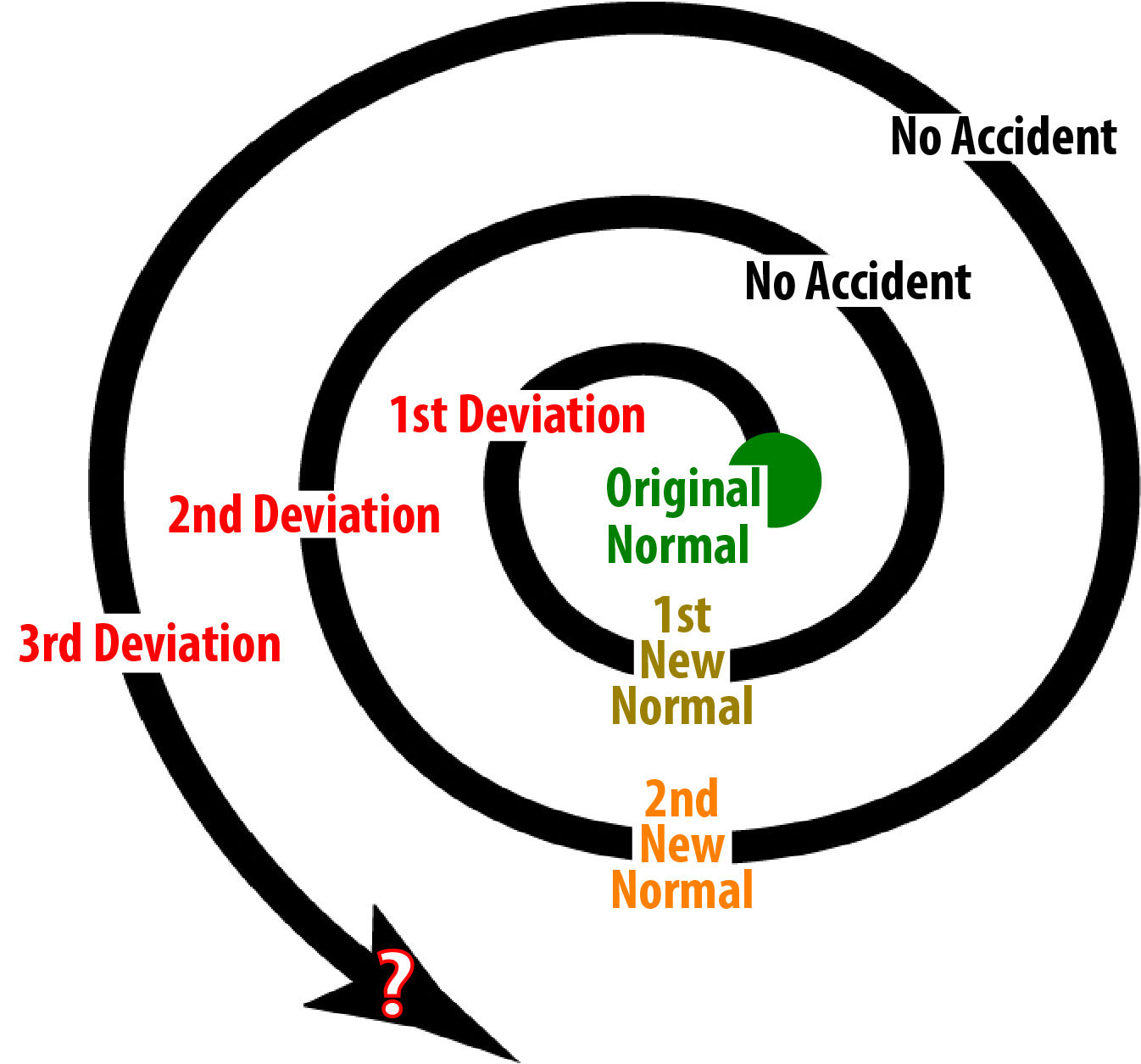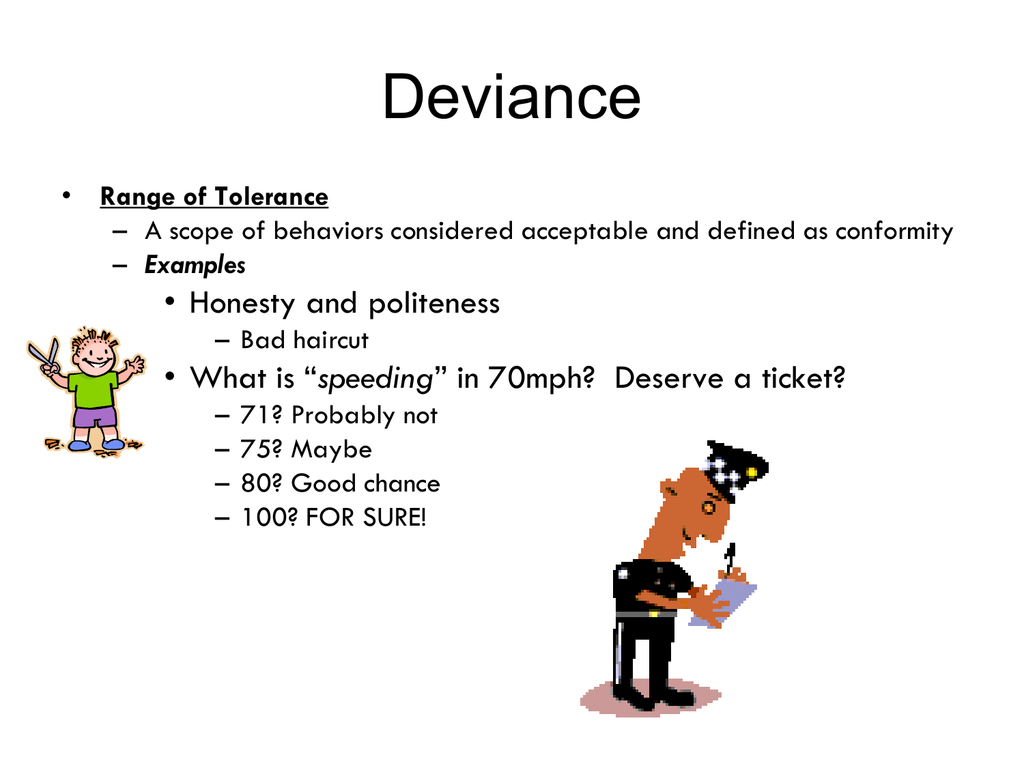Imagine this: You’re at a crowded concert, the music is booming, and the energy is electric. Suddenly, someone starts dancing wildly, completely uninhibited, while everyone else is swaying along more calmly. This person’s behavior, though seemingly harmless, might be considered deviant. They’re breaking from the established social norms of the situation. But why are some actions considered deviant while others are not? And how do social norms shape our understanding of what’s right and wrong?

Image: dzdeviance.org
Deviance isn’t just about bizarre behavior. It’s about the intricate dance between individual actions and the unwritten rules of society. Understanding deviance helps us navigate the complexities of human interactions and the diverse ways we choose to express ourselves. In this article, we’ll delve deep into the world of deviance, exploring its definition, historical context, and its impact on our daily lives.
Defining Deviance: When Behaviors Cross the Line
Deviance isn’t a fixed concept, but rather a fluid one influenced by cultural norms, social contexts, and individual interpretations. At its core, deviance refers to any behavior that breaks from the established social norms of a particular group or community. These norms can be formal (like laws) or informal (like unwritten social expectations). What might be considered deviant in one society or culture could be perfectly acceptable in another.
For instance, wearing revealing clothing in some cultures might be seen as deviant, while in others it’s considered perfectly normal. Similarly, public displays of affection can be viewed as deviant in some societies but accepted in others. The contextual nature of deviance underscores its social construction, meaning that our perceptions of what’s right and wrong are shaped by the values and beliefs of our society.
Understanding the Scope of Deviance
Deviance can be categorized into various types, each with its own implications and societal responses. Here are some key types of deviance:
- Formal Deviance: This involves violating formally established rules like laws, resulting in legal consequences. Examples include theft, assault, and drug use.
- Informal Deviance: This involves violating less formal social norms, often resulting in social censure or disapproval. Examples include wearing offensive clothing, using excessive profanity, or failing to offer a compliment.
- Social Deviance: This encompasses acts that seriously disrupt or threaten the established social order. This might include acts of violence, hate crimes, or engaging in behaviors perceived as harmful to society.
Deviance as a Spectrum
It’s important to remember that deviance exists on a spectrum. Not all deviant acts are equal in severity or impact. Minor deviations from social norms, like forgetting to say “thank you,” are often forgiven and rarely result in serious consequences. But more serious deviations, like crimes, can carry significant legal and social penalties.

Image: studylib.net
The Social Construction of Deviance
The very definition of deviance is constantly evolving. Societies change, their values shift, and what was once considered deviant may no longer be seen as such. For instance, same-sex relationships were once stigmatized and criminalized in many parts of the world, but today they are increasingly accepted and legalized.
This fluidity highlights how power plays a crucial role in defining deviance. Those with power and influence often shape societal norms, determining what is considered acceptable or unacceptable. This can lead to marginalized groups being disproportionately labeled as deviant while the actions of powerful individuals may go unchallenged.
The Impact of Deviance on Society
Deviance doesn’t exist in a vacuum. It has far-reaching consequences, impacting individuals, communities, and society as a whole. Here are some of the key impacts of deviance:
- Social Control: Deviance serves as a reminder of social boundaries and reinforces the existing social order. When people engage in deviant behavior, it can trigger reactions, like punishment, to deter others from similar actions.
- Social Change: While deviance can sometimes be disruptive, it can also be a catalyst for positive social change. Consider movements for civil rights or LGBTQ+ equality, which often challenged societal norms and ultimately led to significant advancements.
- Social Stigma: Individuals labeled as deviant may face social stigma, leading to exclusion, discrimination, and negative stereotypes. This can have detrimental effects on their mental and physical well-being, job opportunities, and overall social standing.
- Criminal Justice System: Deviance, particularly formal deviance that involves breaking laws, often leads to involvement with the criminal justice system. This can create a cycle of punishment, recidivism, and social marginalization.
The Latest Trends in Deviance
The internet has revolutionized the way we define and experience deviance. Online platforms provide fertile ground for new forms of deviance, such as cyberbullying, trolling, and online hate speech. Additionally, the rise of social media has created new avenues for exposing and challenging societal norms, leading to debates about online privacy, censorship, and the limits of free speech.
Modern-day deviance is also influenced by globalized culture, with diverse norms and values interacting and sometimes clashing. This can lead to complex and nuanced understanding of what’s considered acceptable, with cultural sensitivities and ethical considerations playing a significant role in defining boundaries.
Tips for Understanding Deviance
While deviance can often be controversial, understanding its complexities can help us navigate diverse social interactions and contribute to a more inclusive society. Here are some tips for approaching the topic of deviance:
- Recognize the Relativity of Norms: Always remember that deviance is context-dependent. What’s considered deviant in one context may not be in another.
- Question Assumptions: Be critical of labels and assumptions about who is deviant or what behaviors are considered deviant. Delve deeper into the power dynamics and social contexts at play.
- Challenge Stereotypes: Avoid making generalizations about individuals based on their perceived deviations. Be mindful of the impact of stereotyping and prejudice.
- Engage in Open Dialogue: Participate in respectful conversations about deviance, promoting understanding and tolerance. When facing a conflict, seek common ground to resolve disagreements.
Understanding deviance requires a nuanced approach that takes into account the complexities of social norms, power dynamics, and individual interpretations. By engaging with the topic openly and critically, we can foster more inclusive and compassionate societies where diverse perspectives and expressions are valued.
FAQ on Deviance
Q: What is the difference between deviance and crime?
While all crimes are considered deviant, not all deviant acts are crimes. Deviance encompasses any behavior that violates social norms, while crimes are acts that violate the law and lead to legal consequences. For example, wearing a clown costume to a fancy dinner party might be considered deviant, but it’s not a crime. However, stealing money from someone is both deviant and criminal.
Q: How do social norms influence our behavior?
Social norms guide our behavior by providing expectations about how to act in different situations. They influence our decisions, our interactions with others, and our overall sense of how to be a good member of society. While norms can be useful in creating order and predictability, it’s essential to question and challenge them when they are unjust or discriminatory.
Q: Is deviance always a bad thing?
No, deviance isn’t inherently bad. While some forms of deviance can be harmful, others can be catalysts for social progress. For instance, the individuals who challenged societal norms around racial segregation or LGBTQ+ rights were considered deviant in their time, but their actions ultimately led to positive change.
Q: What are some examples of deviance in everyday life?
You might see deviance in everyday life in many forms. For instance, a person cutting in line at the grocery store could be seen as deviant behavior. Someone wearing inappropriate clothing for a particular occasion might be considered deviant. Using profanity in a professional setting could also be classified as deviance.
What Is Deviance
Conclusion
Deviance is a complex and fascinating aspect of social life. Understanding the interplay between individual actions, social norms, and societal response is crucial to navigating a diverse and ever-changing world. By engaging in open dialogue, questioning assumptions, and challenging stereotypes, we can cultivate a more tolerant and inclusive society where the complexities of human behavior are embraced.
Are you interested in exploring specific examples of deviance in history or contemporary culture?






